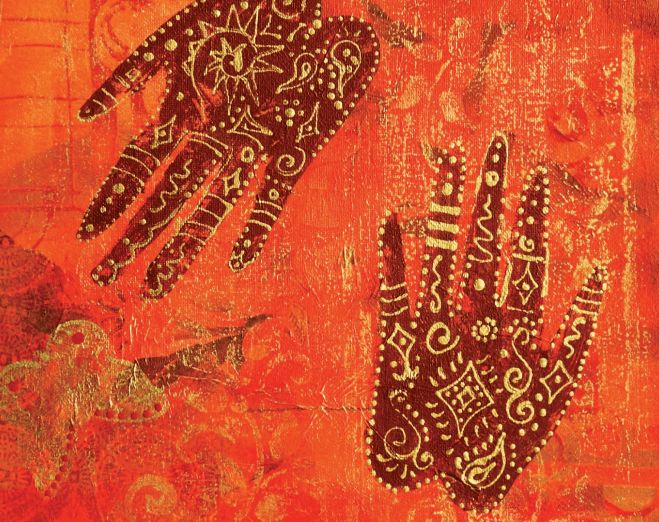Henna, also known as mehendi, originates from the henna plant, scientifically named Lawsonia inermis.
Table of Contents
Introduction to Henna
Henna, a timeless and cherished tradition found in various cultures worldwide, offers a graceful and safe method of body adornment. This art form involves the application of henna paste, resulting in a temporary and painless stain on the skin.
What is Henna?

The leaves of this plant are dried, finely powdered, and combined with liquids such as water or lemon juice, along with essential oils like cajeput, eucalyptus, lavender, and tea tree. Through this process, the natural dye within the leaves, known as lawsone, is released.
There are various methods for applying henna paste to the skin, but the most common and effective technique involves using a plastic cone similar to a pastry piping bag. When the paste is applied, the dye starts to stain the skin, and after approximately 30 minutes, the paste dries. The longer the paste remains on the skin, the darker the resulting stain.
Initially, the natural henna paste creates a vibrant orange stain, which gradually deepens over the course of the day. The palms of the hands and soles of the feet, due to their thicker skin, tend to retain the deepest and longest-lasting stains. The henna stain typically lasts for four to five days, gradually fading as the skin naturally exfoliates. It is essential to avoid henna that produces an immediate and deep color upon application, as it may contain chemicals and is not natural.
History of Henna Art:

Henna art has been an integral part of Middle Eastern and Asian cultures for centuries. Traditionally, henna served various purposes. In hot climates, people used henna for its cooling properties to combat the heat, often covering their entire hands and feet with an orange stain. Ancient Egyptians even employed henna to dye the nails and hair of mummies before burial. Additionally, henna was utilized for body decoration, giving rise to the intricate and precise mandala designs seen today. In countries like India and Pakistan, it is customary for brides to have their hands adorned with henna, symbolizing a prosperous married life when the stain is dark.
How I Got Started with Henna:

My fascination with henna began in my childhood when my cousins would skillfully apply henna on my hands for the Islamic festival of Eid. Captivated by the intricate designs they effortlessly created, I yearned to try it myself.
During high school, I embraced henna as a hobby, initially practicing on family members. As my skills improved over time, I attracted a few clients through mutual friends. Eventually, I expanded my work online through social networking platforms, gaining popularity on Instagram. Along this journey, I experimented with henna art using acrylic paint, branching out into designing candles, phone cases, and canvases. Among these endeavors, phone cases emerged as highly sought-after creations.
The online henna community has been a tremendous source of inspiration and guidance. Through interactions with fellow henna artists, I have honed my skills and deepened my understanding of natural henna. I firmly believe that anyone can become a henna artist with dedication, continuous practice, and a commitment to growth.
Being a henna artist means embracing daily challenges and constantly pushing the boundaries of one’s artistry. Even when reaching a point of proficiency, there is always room for improvement. I feel blessed to pursue my passion for henna and cherish the endless opportunities it has brought me.










Pingback: Supplies and Tools of Henna - Mehndi Designs
Pingback: How to make Henna Paste - Mehndi Designs